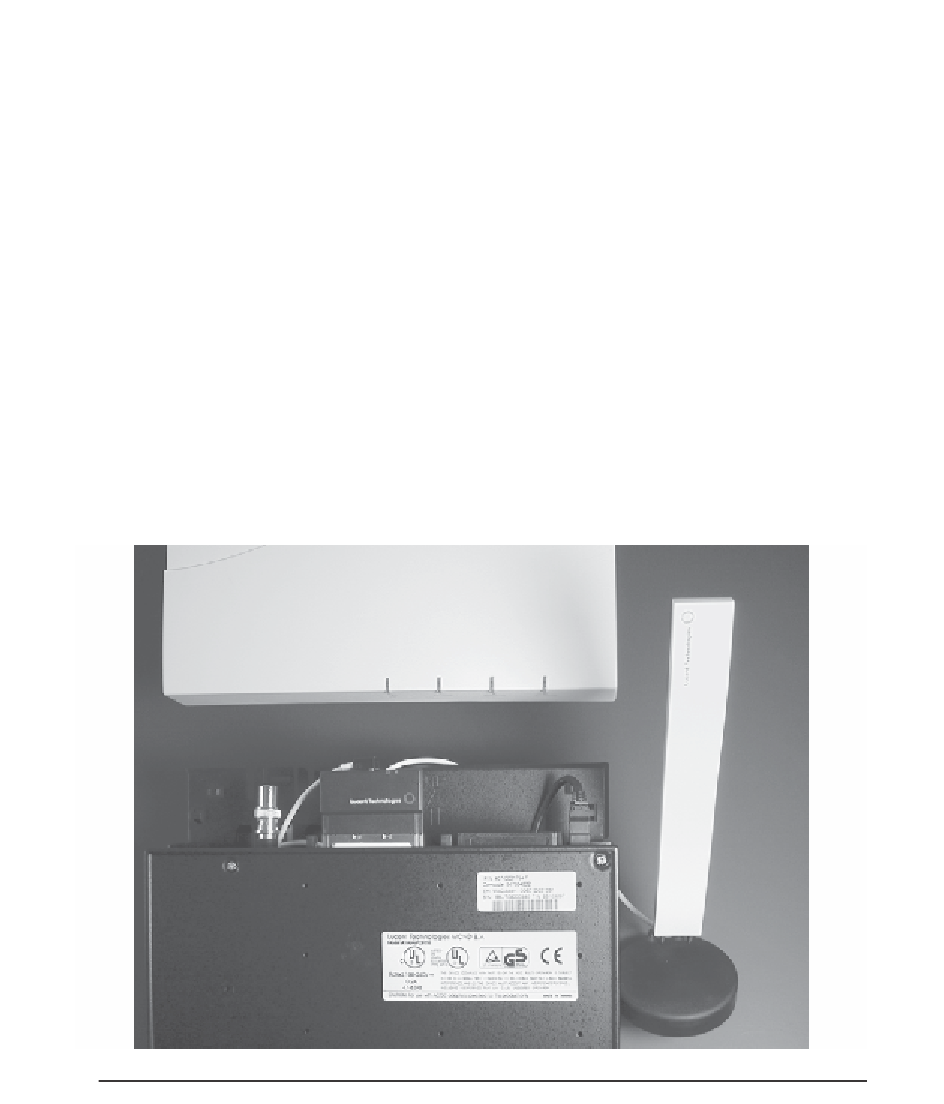Information Technology Reference
In-Depth Information
the W-NICs becomes an ad-hoc (temporary) controller, to sequence the transmis-
sions of all stations. Remember, the operation of 802.11 is “collision-avoidance,”
which implies a synchronization between stations that does not occur on regular
Ethernet. The main drawback to ad hoc mode is that there is no designated point
that interconnects between the wireless Ethernet and a wired Ethernet LAN, and
there is no central control point to apply a rigorous discipline to the exchange.
In
Infrastructure
operation, a single device, called an
access point server
or just
AP
(Fig. 13.6), controls network operation and regulates access to the wireless
medium (as in Fig. 13.5b). Typically, client/server WLANs feature better and more
consistent throughput. A wireless station may not “see” another peer and might
cause unwanted interference in an ad-hoc network. However, the access point can
detect these conditions and manage the network in a more orderly fashion. In addi-
tion, the access point can adjust the speed of operation individually for each station,
and can be equipped with a gain antenna to extend the effective range of all stations
on the network, without the necessity for all end points to have gain antennas.
Some access points feature multiple W-NICs and can bridge between an indoor
WLAN and an outdoor point-to-point connection to another building. This is called
FIGURE 13.6
WiFi access point (shown with cover removed and external gain antenna).

